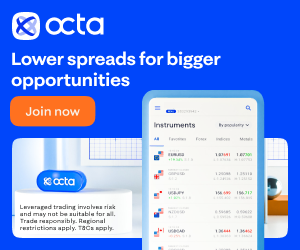NAGA Journal
| Journal status: live NAGA joined in | not yet |
NAGA Profile
Website
Year
2015
Country
Seychelles
Branches
3
Regulation
FSA Seychelles
Registration
FSA Seychelles
Investor protection
Fund protection
no
Publicly traded
FRA:N4G, XTRA:N4G
Restricted in
Not serving
х Afghanistan, Africa, Austria, Belarus, Belgium, Bulgaria, Canada, Croatia, Cuba, Cyprus, Czechia, Denmark, Estonia, Finland, France, Germany, Greece, Hungary, Iran, Iraq, Ireland, Italy, Latvia, Lithuania, Luxembourg, Malta, Netherlands, North Korea, Poland, Portugal, Romania, Russia, Slovakia, Slovenia, Spain, Sweden, Syria, UK, US, Ukraine, Yemen
Broker type
MM
Dealing book
A+B hybrid book
Tier
3
Execution speed
80 ms
LPs total
4
LPs quality
MTFs, Non-banks, Other
LPs names
Broctagon Prime, Finalto, LMAX, XTB
NAGA Accounts
MM
Minimum Deposit
10 $
Leverage
1000 : 1
Minimum Lot
0.01 lots
EURUSD spread
1.1 pips
Commission
0 $/lotRT
Volume
Unlimited
Margin Call
100 %
Stop Out
50 %
Execution
Market
Spread
floating
Scalping
no
Deposit & Fees
Deposit methods
Bank Wire, Credit Card, Debit Card, Neteller, Skrill, Giropay
Base currency
USD, EUR, GBP, PLN
Segregated accounts
no
Interest on margin
no
Inactivity fee
after 12 months
| Update broker |
- Full listing profile: NAGA broker profile
Is NAGA safe?
- Investor protection: no
- Regulation: FSA Seychelles
- Registration: FSA Seychelles
- Publicly traded: FRA:N4G, XTRA:N4G
- Segregated account: no
- Guaranteed Stop Loss: yes
- Negative Balance Protection: yes
Is NAGA trusted?
- Information transparency: high
★★★★★ - Customer service: virtually non-existent
★ - NAGA website: semi-detailed, updated
★★★ - NAGA popularity (by visitor count): top visited
★★★★★
How NAGA works
NAGA acts as the counterparty to every transaction. As NAGA may act as the buyer when the client sells and the seller when the client buys, NAGA’s interests may be in conflict with its clients. NAGA may rely on various third party sources to determine the prices and spreads at which it offers to trade with its clients and/or as a hedging counterparty to selectively hedge some client orders. NAGA may also make its own price and may also act as the market maker for its client orders. While NAGA may hedge some client orders, other client orders may not be hedged, and NAGA may take the risk of holding the position opposite the client.
https://files.naga.com/order-execution-policy-sep-2019.pdf
20.2.The Client is not allowed to enter into any form of prohibited trading i.e. certain trading techniques commonly known as "arbitrage trading", "picking/ sniping" or the use of certain automated trading systems or “Expert Advisors”; and/or follow an abusive trading strategy i.e. any trading activity which is aiming towards potential riskless profit by opening opposite orders, during periods of volatile market conditions, during news announcements, on opening gaps (trading sessions starts), or on possible gaps where the underlying instrument has been suspended or restricted on a particular market, between same or different trading accounts.
https://files.naga.com/Client-Agreement-NG-Sep-2020.pdf
Add new comment...










